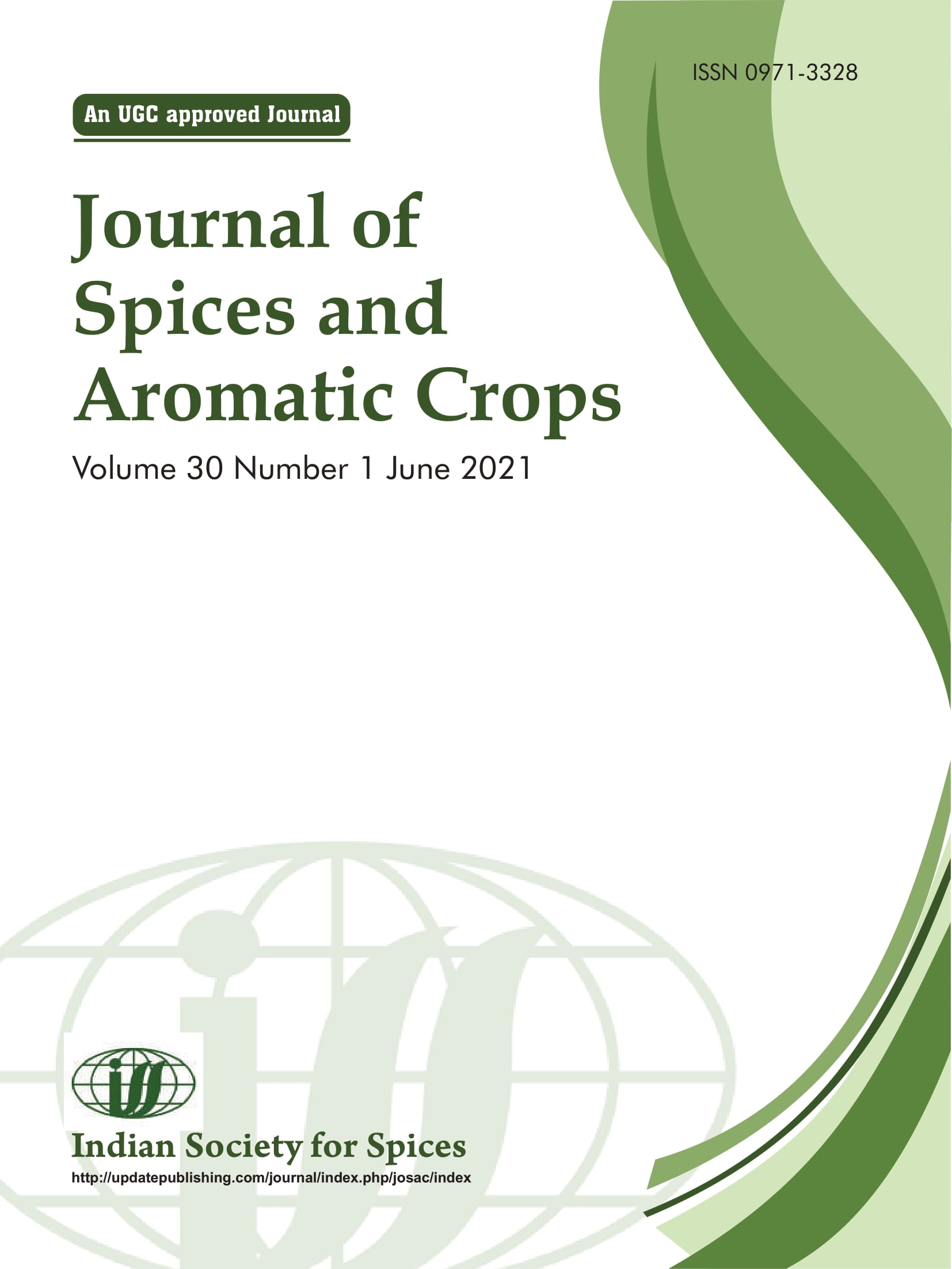Price transmission and supply response: the case of Indian small cardamom
Indian small cardamom – Price analysis
DOI:
https://doi.org/10.25081/josac.2021.v30.i1.6525Keywords:
causality, demand, market integration, price, spiceAbstract
Market price volatility, the major challenge faced by the cardamom exporters greatly hinders the investment and destabilizes the earning of small holders. The present study attempted to analyse the price transmission between Indian and international markets and study the supply response of small cardamom to changes in price. The co-movement of prices of small cardamom exist between the Indian and international markets after trade liberalisation and the price transmission has been from the international market to the Indian market. The short-run disequilibrium has been found between the Indian and international prices of cardamom, which got corrected with varying speed of adjustment. The positive and significant elasticity of supply of small cardamom with respect to its own two year lagged price has been established. Crop specific price stabilization mechanism would help to overcome the wide fluctuations in prices of small cardamom.
Downloads
References
Anoopkumar M 2013 Intra-year price instability of commercial crops in India: exploring the underlying dynamism. Int. J. Food Agric. Econ. 2(1): 145-156.
Bhadouria P S, Singh M L, Chandrasekhar V & Kuruvila A 2012 Post-Harvest Handling and Marketing. NRPPD Report, CDS, Thiurvananthapuram, pp. 40-56.
George M & Cherian E 2017 Emergent global marketing challenges for Kerala cardamom producers vis-à-vis the role of the Spices Board of India. Int. J. Community Dev. Manag. Stud. 1: 39-62.
Granger CW 1980 Testing for causality: a personal viewpoint. J. Econ. Dyn. Control 2: 329-352.
IGIDR [Indira Gandhi Institute of Development Research] 2011 Towards Improving Understanding of Agricultural Output, Agricultural Markets, and Price Formation in the Context of Food Security in India. Proposal submitted to Ministry of Agriculture, Government of India, 19p.
Johansen S & Juselius K 1990 Maximum likelihood estimation and inference on cointegration—with applications to the demand for money. Oxford Bull. Econ. Statist. 52(2): 169-210.
Kalaitzandonakes N G & Shonkwiler J S 1992 A state-space approach to perennial crop supply analysis. Am. J. Agric. Econ. 74(2): 343-352.
Narayanan S 2004 Commodity Prices and Their Effect on Investment Viability and Repayment: The Case of Indian Cardamom. Occasional Paper - 30, Department of Economic Analysis and Research, NABARD, Mumbai, 68 p.
Sadoulet E & De Janvry A 1995 Quantitative Development Policy Analysis: Vol. 5. Johns Hopkins University Press, Baltimore and London, 438p.
Spices Board 2019 Spices Board statistics [on-line]. Available: http://indianspices.com.
Published
How to Cite
Issue
Section
Copyright (c) 2021 A Indhushree, A Kuruvila

This work is licensed under a Creative Commons Attribution-NonCommercial-NoDerivatives 4.0 International License.






 .
.